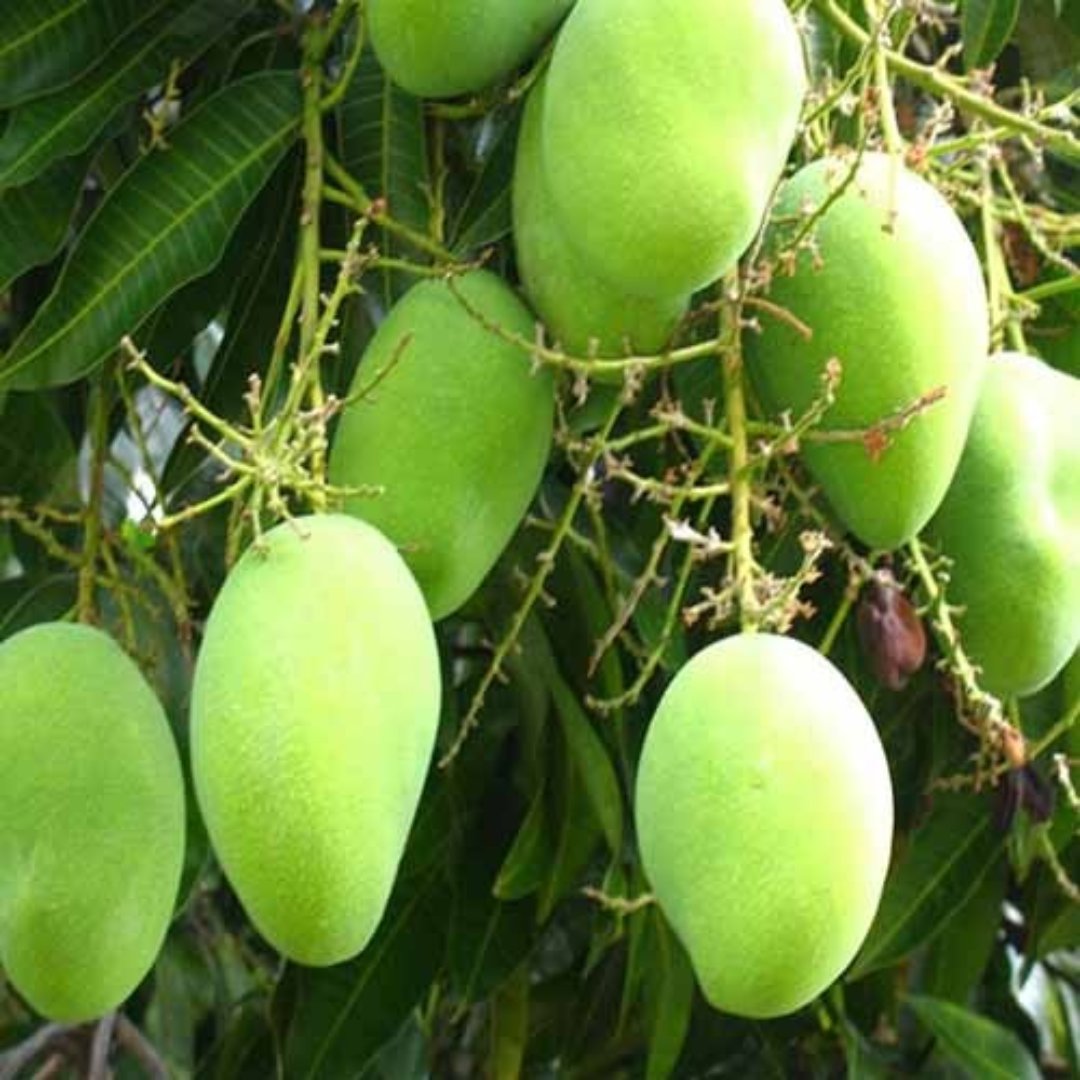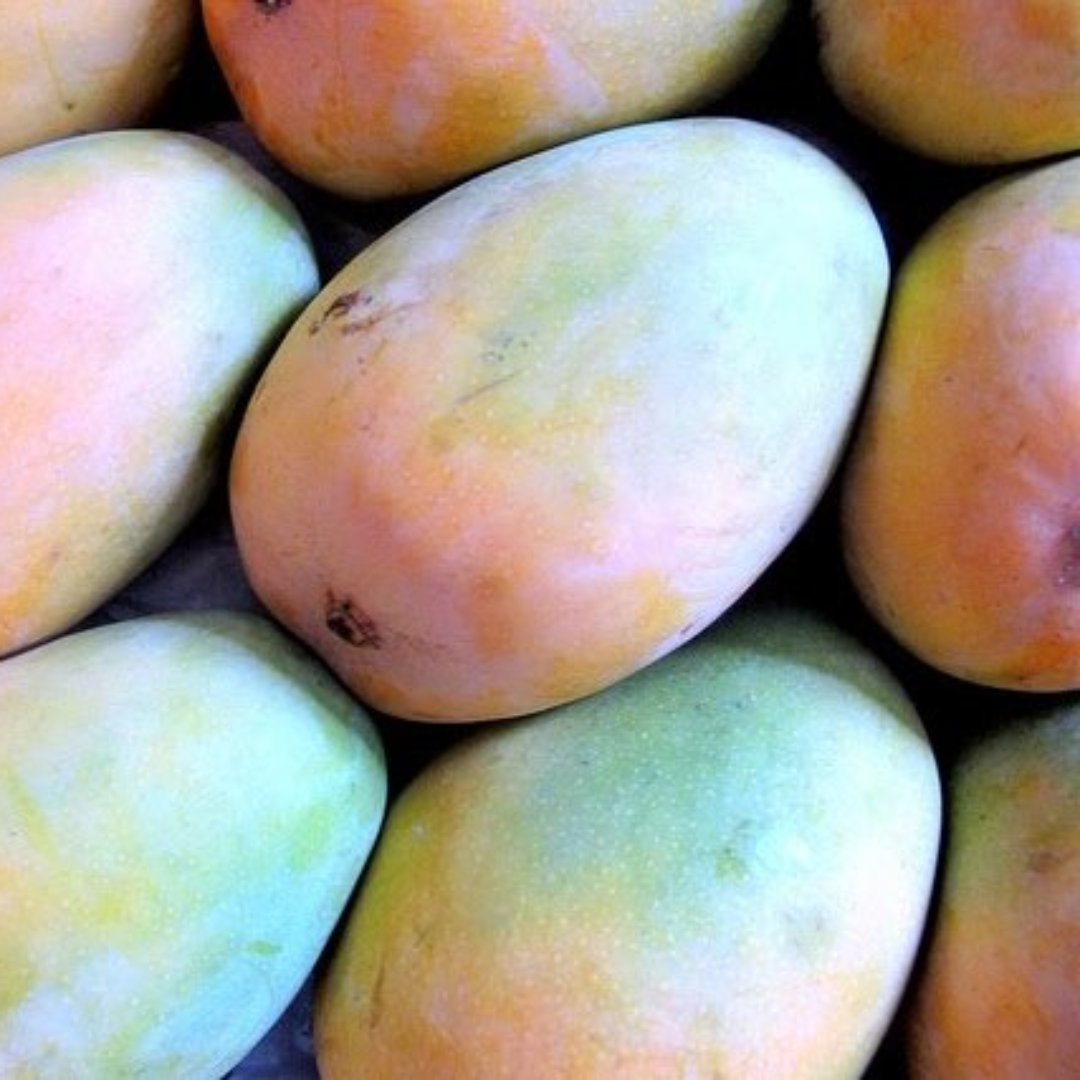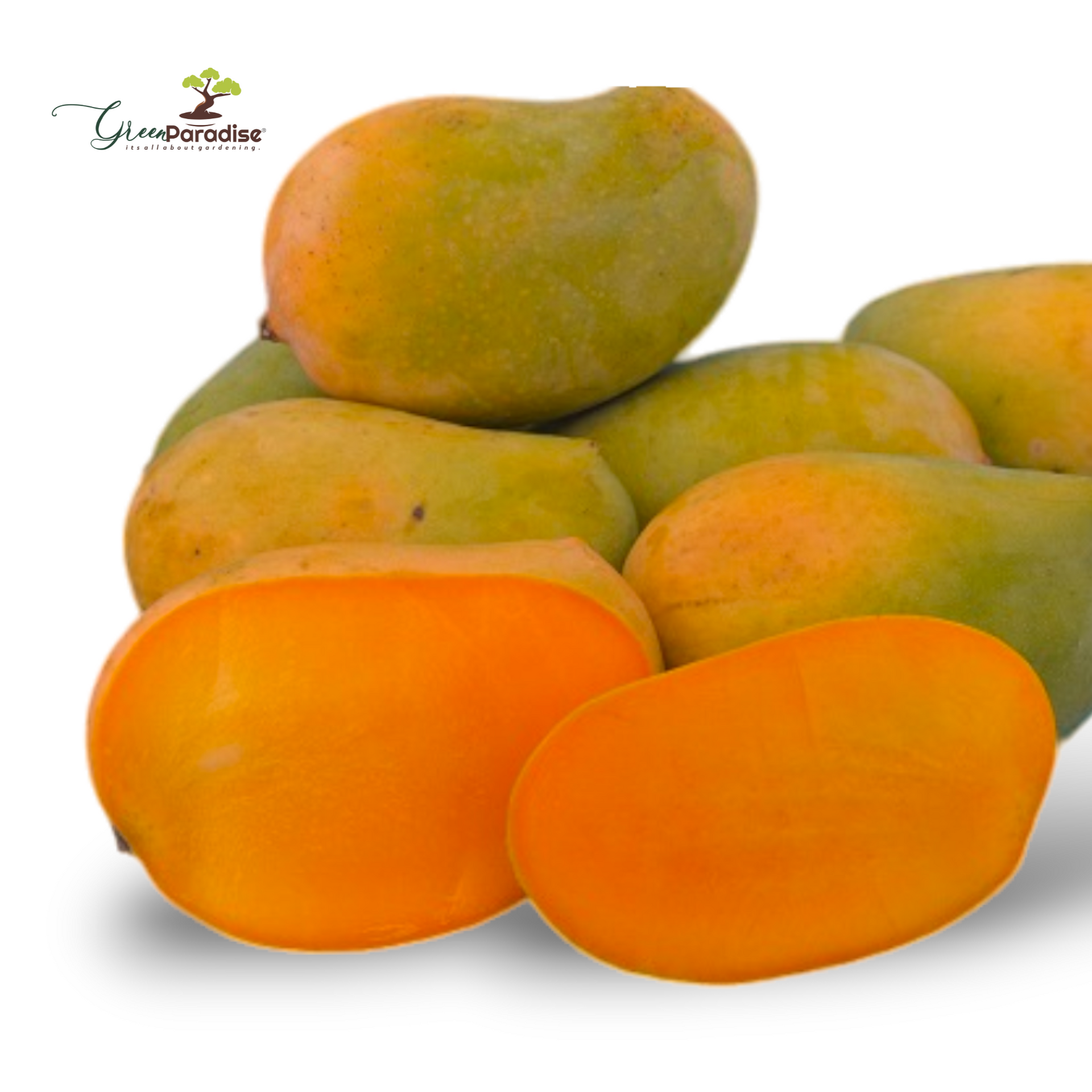



Exclusive original Kesar Mango Live Plant- Green Paradise Live
Rs. 474.00
Guaranteed Safe Checkout
Green Paradise Offers Healthy Kesar Mango Plant
About Kesar Mango Plant
Kesar mango, also known as the "Queen of Mangoes," is a popular variety of mangoes cultivated primarily in the state of Gujarat, India. It is highly regarded for its distinctive flavor, rich aroma, and vibrant saffron-colored flesh.
Here are some key details about the Kesar mango plant:
Origin and Cultivation:
The Kesar mango originated in the foothills of the Girnar mountains in Junagadh, Gujarat, India. The region's unique climate, fertile soil, and adequate sunlight contribute to the excellent quality of Kesar mangoes. It is mainly grown in the districts of Junagadh, Amreli, Bhavnagar, and Rajkot in Gujarat.
Tree Description:
The Kesar mango tree is a medium to large-sized tree with a dense and spreading canopy. It can grow up to 10-15 meters in height, and its branches form a symmetrical shape. The leaves are dark green and shiny, providing a lush appearance to the tree.
Fruit Characteristics:
Kesar mangoes are small to medium-sized fruits, weighing around 150-250 grams each. They have an ovate shape with a slightly flattened base. The skin is smooth and golden-yellow when ripe, often with a red blush on the shoulder. The flesh is fiberless, firm, and has a sweet, rich flavor with a tangy undertone. Kesar mangoes are known for their unique saffron-like aroma.
Harvesting Season:
The Kesar mango season typically starts in May and extends until July. The fruits are harvested when they reach maturity, which is indicated by their change in color, aroma, and firmness. Once picked, they continue to ripen off the tree.
Culinary Uses:
Kesar mangoes are widely celebrated for their exquisite taste and are consumed both fresh and in various culinary preparations. They are often used to make mango-based desserts, such as mango ice cream, mango lassi (a popular Indian yogurt-based drink), mango sorbet, and mango pudding. The fruit's sweet and tangy flavor also complements savory dishes, salads, chutneys, and pickles.
Export and Demand:
Kesar mangoes have gained international recognition and are in high demand globally. They are exported to various countries, including the United States, Canada, the United Kingdom, the Middle East, and Southeast Asia. The export of Kesar mangoes plays a crucial role in boosting the economy of Gujarat and promoting Indian agricultural products abroad.
It's worth noting that while Kesar mangoes have distinctive qualities, they are just one among many different types of mangoes cultivated worldwide. Each variety has its own unique characteristics, making mangoes a diverse and beloved fruit globally.
How To Grow Kesar Mango Plant
Growing a Kesar mango plant requires specific conditions and care to ensure its healthy growth.
Here are the steps you can follow to grow a Kesar mango plant:
Obtaining a Kesar Mango Tree:
- Purchase a Kesar mango sapling from a reputable nursery or source it from a reliable supplier.
- Ensure that the sapling is healthy, disease-free, and of good quality.
Selecting the Planting Location:
- Choose a sunny location that receives at least 6 to 8 hours of direct sunlight per day.
- Ensure that the area has well-draining soil to prevent waterlogging.
Preparing the Planting Hole:
- Dig a hole that is wider and deeper than the root ball of the sapling.
- Amend the soil with organic matter similar as compost or well- rotted ordure to ameliorate its fertility and drainage.
Planting the Sapling:
- Gently remove the sapling from its container, taking care not to damage the roots.
- Place the sapling in the center of the planting hole, ensuring that the top of the root ball is level with or slightly above the ground.
- Backfill the hole with soil, and indurate it gently around the roots to exclude air pockets.
Watering:
- Water the newly planted sapling thoroughly to settle the soil around the roots.
- give regular waterings to keep the soil unevenly wettish but not doused.
- During the dry season, water the tree deeply once or twice a week.
Mulching:
- Apply a layer of organic mulch, such as wood chips or straw, around the base of the tree.
- Mulching helps retain humidity, suppresses weeds, and regulates soil temperature.
Fertilization:
- Apply a balanced fertilizer formulated for fruit trees every two to three months during the growing season.
- Follow the manufacturer's instructions for the recommended application rates.
- Alternatively, you can use well-rotted manure or compost as a natural fertilizer.
Pruning:
- Prune the Kesar mango tree during the dormant season to maintain its shape and size.
- Remove any dead, damaged, or diseased branches.
- Prune the tree lightly to encourage branching and fruit production.
Pest and Disease Control:
- Cover the tree regularly for any signs of pests or conditions.
- Consult with local gardening experts or agricultural extension services to identify and address any issues promptly.
- Use organic or chemical remedies as recommended for specific pests or diseases.
Harvesting:
- Kesar mangoes typically ripen from June to July, but the exact timing may vary depending on the climate.
- Harvest the mangoes when they develop a sweet aroma, the skin turns yellow, and they become slightly soft to the touch.
- Remember that growing a Kesar mango tree requires patience as it takes several years for the tree to bear fruit. Provide consistent care and maintain a suitable environment to help your Kesar mango plant thrive and produce delicious mangoes.
𝗥𝗲𝗹𝗮𝘁𝗲𝗱 𝗽𝗿𝗼𝗱𝘂𝗰𝘁𝘀
Flowering Plants
Green Paradise® Pink Lotus Tuber for Pond & Water Gardens – Healthy, Ready to Grow Aquatic Flower Plant Bulb
Green Paradise® Pink Lotus Tuber – Premium Aquatic Flower Plant ✨ Product Description: Bring the beauty of vibrant pink lotus blooms to your water garden or pond with the Green...
Rs. 549.00
Flowering Plants
Rare Heliconia Wagneriana Live Plant Heliconia psittacorum Live Plant
Introducing the Exquisite Heliconia Psittacorum Plant: A Tropical Marvel for Your Home Elevate your indoor and outdoor spaces with the captivating beauty of the Heliconia Psittacorum Plant. Renowned for its...
Rs. 499.00
Flowering Plants
Green Paradise Live-Heliconia Wagneriana Plant with Plastic Pot
Green Paradise Offer Beautiful Heliconia Wagneriana Plant About Heliconia Wagneriana Plant Heliconia wagneriana is a stunning and attractive tropical plant known for its unique and colorful inflorescence. Here's what I can...
Rs. 499.00
Flowering Plants
Heliconia rostrata Live Plant heliconia plant Heliconia psittacorum Live Plant
Introducing the Heliconia psittacorum Plant – Nature's Exotic Masterpiece! About Heliconia Psittacorum Plant: Elevate your garden to new heights with the breathtaking Heliconia psittacorum Plant, a true marvel of nature....
Rs. 499.00
Outdoor Plant
Green Paradise® Water Rose (Pistia) – Live Water Cabbage Aquatic Plant for Ponds, Aquariums & Water Gardens | Natural Oxygenating Floating Plant
Green Paradise® Water Rose (Aquatic Pistia) Plant Welcome to the lush world of Green Paradise® Water Rose (Aquatic Pistia)! Our aquatic plant is more than just a decorative addition to your...
Rs. 399.00
Seeds
Heliconia Golden Torch plant bulbs positive energy and beautiful flowers giving Plant species. (pack of 3)
Green Paradise offers Heliconia Golden Torch Plant About Heliconia Golden Torch Plant Heliconia Golden Torch is a beautiful and striking tropical plant known for its bright and vibrant inflorescence....
Rs. 399.00
Seeds
Heliconia Plant Bulbs Heliconia bihai x marginata 'Rauliniana' 5 Bulbs-Green Paradise Live
Green Paradise Offers Heliconia bihai x Marginata Rhizomes (Pack of 5 Bulbs) About Heliconia Marginata Heliconia marginata, also known as the Red Bassy or Lobster Claw, is a stunning tropical plant...
Rs. 749.00
Flowering Plants
Heliconia bird of paradise Live healthy Plant-Green Paradise Live
Green Paradise Offers Beautiful Heliconia Bird Of Paradise Plant About Heliconia Bird Of Paradise Plant It seems like there might be a slight confusion in your question. Heliconia and Bird of...
Rs. 349.00




